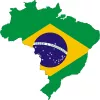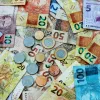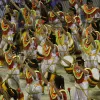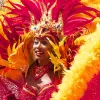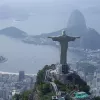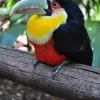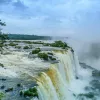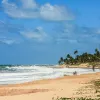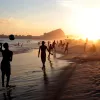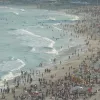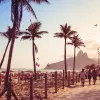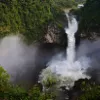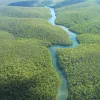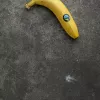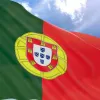Important update from TheSchoolRun
For the past 13 years, TheSchoolRun has been run by a small team of mums working from home, dedicated to providing quality educational resources to primary school parents. Unfortunately, rising supplier costs and falling revenue have made it impossible for us to continue operating, and we’ve had to make the difficult decision to close. The good news: We’ve arranged for another educational provider to take over many of our resources. These will be hosted on a new portal, where the content will be updated and expanded to support your child’s learning.
What this means for subscribers:
- Your subscription is still active, and for now, you can keep using the website as normal — just log in with your usual details to access all our articles and resources*.
- In a few months, all resources will move to the new portal. You’ll continue to have access there until your subscription ends. We’ll send you full details nearer the time.
- As a thank you for your support, we’ll also be sending you 16 primary school eBooks (worth £108.84) to download and keep.
A few changes to be aware of:
- The Learning Journey weekly email has ended, but your child’s plan will still be updated on your dashboard each Monday. Just log in to see the recommended worksheets.
- The 11+ weekly emails have now ended. We sent you all the remaining emails in the series at the end of March — please check your inbox (and spam folder) if you haven’t seen them. You can also follow the full programme here: 11+ Learning Journey.
If you have any questions, please contact us at [email protected]. Thank you for being part of our journey it’s been a privilege to support your family’s learning.
*If you need to reset your password, it will still work as usual. Please check your spam folder if the reset email doesn’t appear in your inbox.
Brazil
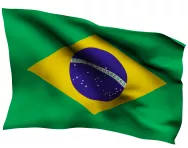
Where is Brazil?
Brazil is in South America, which is in the western hemisphere. In fact, Brazil is the largest country in South America, and the fifth-largest in the world!
There are 13 countries in South America, and only two of them don’t share part of their border with Brazil: Chile and Ecuador. Brazil has the fifth highest population in the world, and the capital is Brasilia.
Top 10 facts
- Brazil is the largest country in South America, and the fifth highest population compared to all other countries in the world (the highest is China).
- The official language of Brazil is Portuguese.
- The capital of Brazil is Brasilia, but the largest city is Sao Paulo.
- The Brazilian population was 209 million in 2017.
- The currency in Brazil is the ‘real’. One ‘real’ is divided up into 100 ‘centavos’ (like our pence).
- Brazil has 26 states and one federal district – the federal district is Brasilia.
- A famous holiday in Brazil is Carnival, which is a week of parades and celebrations that takes place 46 days before Easter every year.
- The first European settlers in Brazil were from Portugal.
- Brazil’s Independence Day is celebrated on 7 September.
- The 2016 Olympic Games were held in Rio de Janeiro.
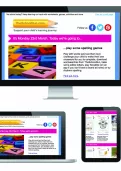
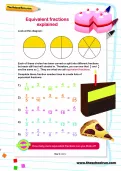
Boost Your Child's Maths & English Skills!
- Start your child on a tailored learning programme
- Weekly resources sent direct to your inbox
- Keep your child's learning on track
Did you know?
People in Brazil speak Portuguese. It is the only country in South America that speaks Portuguese. ‘Brazil’ is spelled differently in Portuguese – ‘Brasil’.
The capital of Brazil is Brasilia. That’s easy to remember!
The enormous statue of Christ the Redeemer in Rio de Janeiro is considered to be one of the seven wonders of the modern world.
There are over 200 million people in Brazil – that’s more than three times as many people as live in the United Kingdom!
In Brazil, people pay for things in ‘real’ (pronounced ray-al). One real is divided up into 100 centavos, and is worth about the same as 30p in the UK. You can see a picture of reals and centavos below.
The main religion in Brazil is Christianity.
Brazil has a very long coastal border with the Atlantic Ocean – it is 7,491km (4,655 miles) long. That’s as long as it would take to travel from Plymouth to Aberdeen about seven times!
Brazil shares a border with all but two (Chile and Ecuador) of the other 12 countries in South America.
The Amazon River runs across northern Brazil. It is the second longest river in the world and carries the largest amount of water of any river in the world.
Brazil is home to a part of the Amazon rainforest. This is a tropical rainforest that is home to many rare and interesting species of plants and animals, but many of them are becoming rarer and are considered ‘endangered’. Learn more about conservation and endangered species
Brazil’s major exports include coffee, bananas, sugar, tobacco, soya, orange juice, beef and chicken.
Look through the pictures in the gallery and see if you can spot the following:
- The Brazilian flag
- Map of Brazil
- Brazilian currency: real and centavos
- Dancers in the Carnival
- Christ the Redeemer statue in Rio de Janeiro
- The rainforest is home to amazing birds and animals
- Iguazu Falls in Brazil
- Brazil is famous for its beautiful beaches
- Beach-goers in Rio
Gallery
About
The largest country in South America, Brazil is made up of varied landscapes: mountains, grasslands, deserts, rainforest and a very long coastline. The climate in Brazil is mostly tropical and subtropical, but temperatures vary because it has lots of different kinds of terrain.
Brazil is rich in minerals (gold, diamonds, uranium and oil) and one of the largest producers of coffee in the world.
Brazil is made up of 26 states, and one federal district. Each state has its own capital. The federal district is Brasilia, the capital of Brazil.
A popular dish in Brazil is feijoada, which is a stew with beans and pork. Brazil has a good climate for growing many different kinds of foods, especially fruit.
You can find lots of different foods in Brazil because many immigrants from other countries have settled there over the years – from Europe (Portugal, Italy and Poland), Asia (Japan), Africa (because of the slave trade until the late 1800s) and the Middle East. There are also many descendants from the native tribes who lived there before settlers came.
People from Portugal were the main settlers in Brazil, which is why Portuguese is still spoken there now. The first explorer to claim land there was Pedro Álvares Cabral in 1500. (To put that into context in UK history, Henry VIII was crowned king in 1509.) Brazilian Independence Day is celebrated on 7 September; on 7 September 1822, Brazil declared independence from Portugal.
The national flag in Brazil has a green background with a dark blue sphere and yellow diamond in the centre. Each part of the flag has a special meaning:
- Green represents the lush vegetation that can be found in Brazil.
- Yellow represents wealth and riches.
- The dark blue sphere represents the colour of the sky in the tropics.
- Inside the sphere are 27 stars of different sizes, which represent the 26 states and one federal district that make up Brazil.
- In the middle of the sphere is a banner with the words ‘ordem e progresso’ on it – this means ‘order and progress’.
Brazil also has a national coat of arms, which was made in 1889 – just after Brazil became a republic on 15 November 1889. On it are this date, the coffee plant and tobacco plant (two main crops at the time), the Southern Cross, and stars representing the 26 states and one federal district.
The Southern Cross is a constellation that you can only see when you’re in the Southern Hemisphere of the globe. Brazil is just one of the countries that has the Southern Cross on its flag – both Australia and New Zealand have it on their flags too.
One of Brazil’s most famous events is Carnival, which is held 40 days before Easter. It lasts for about a week, and each part of the country has different events. There are parades, lots of music, lavish costumes, dancing and singing. People from all over the world visit Brazil during Carnival to experience the events and excitement.
The 2016 Olympic Games in Rio (5-21 August) was the first Games to take place in South America. Over 17 days 10,500 athletes from 205 countries competed in 306 medal events!
Names to know
Dilma Rousseff (1947-present) – Dilma Rousseff was the first woman to be elected as president in Brazil.
Pedro Álvares Cabral (1467/68-1520) – In 1500, Cabral, from Portugal, was the first explorer to claim land where Brazil is now located.
João Faras – Faras was an astronomer who travelled with Pedro Álvares Cabral when he discovered Brazil in 1500. He is thought to be the first European to record the Southern Cross constellation correctly.
Marshal Deodoro da Fonseca (1827-1892) – Fonseca took over the government of Brazil on 15 November 1889 and reorganised it as a constitutional republic. Before this, Brazil had been an empire ruled by an emperor.
Edson Arantes do Nascimento (1940-present) – Better known by his nickname, Pelé, he is a famous footballer from Brazil who scored the most League goals (541).
Oscar Niemeyer (1907-present) – Neimeyer is a famous architect, and most known for the buildings he designed in Brasilia.
Related Videos
Just for fun...
- Take an interactive look at Brazilian objects and customs
- Hear simple phrases in Portuguese, Brazil's official language
- Try some Brazilian-themed crafts
- Make your own Brazilian chocolate truffles, brigadeiro, or other Brazilian food
Children's books about Brazil
Find out more
The Kiddle guide to Brazil is packed with information
Find out about the legacy of the Rio 2016 Olympic Games
See a BBC Newsround report about a child's life in Rio
Find out about some popular Brazilian foods
Watch a video about the Bolsa family who live in a favela, a shantytown in Brazil
Find out about the Brazilian martial art of capoeira
Information about the world-famous statue of Christ the Redeemer in Rio
Discover Brazil's famous Carnival celebrations
See for yourself
Top sights in Brazil include:
- Christ the Redeemer Statue, Rio de Janeiro
- Brasilia, famous for its architecture
- The Amazon River and rainforest
- Carnival
- The Iguassu Waterfalls
- Fernando de Noronha, an archipelago off the coast of Brazil
- The Pantanal (the largest wetland in the world)
- Sao Paulo, Brazil’s largest city


